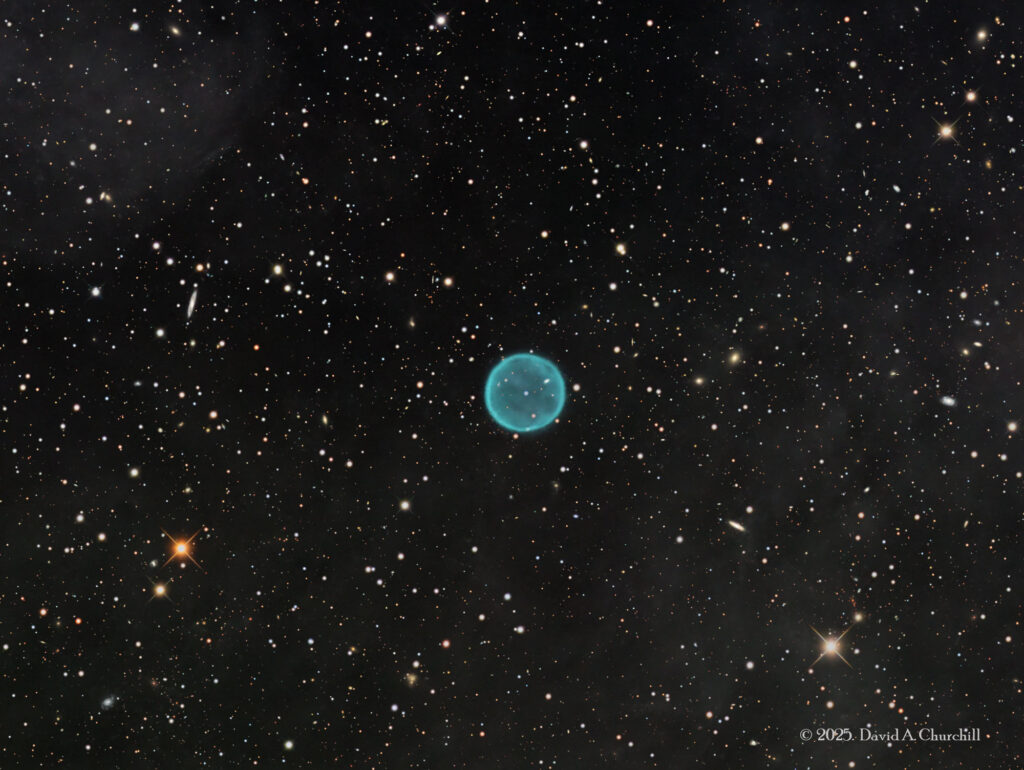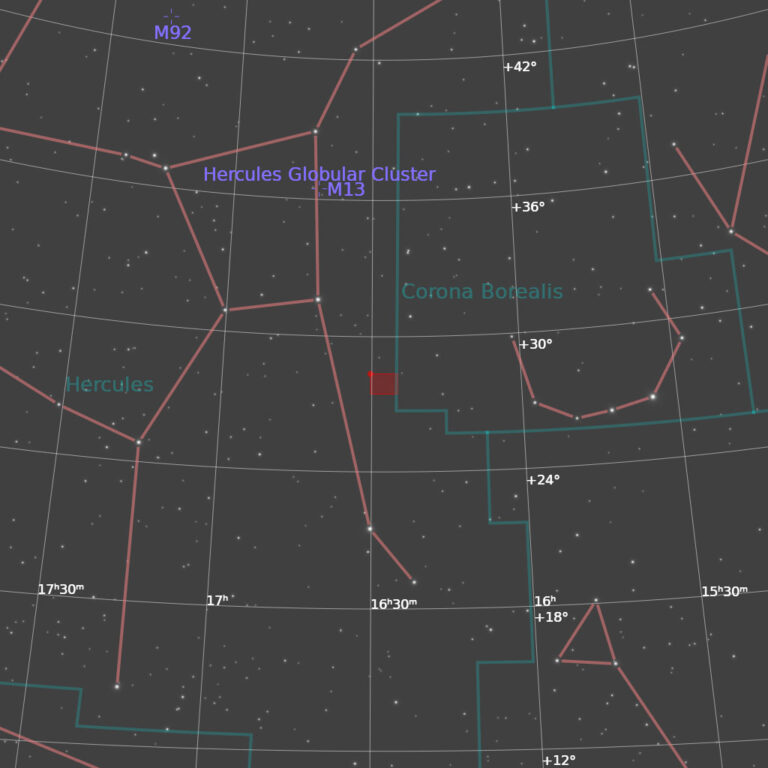Abell 39
Planetary Nebula, Hercules
April 2025. Cave Creek Canyon Observatory, Arizona Sky Village
- Description
- Technical
- Links
Abell 39 (PN A66 39) is a low surface brightness planetary nebula in the constellation of Hercules. It is the 39th entry in George Abell’s 1966 Abell Catalog of Planetary Nebulae (and 27th in his 1955 catalog) of 86 old planetary nebulae which either Abell or Albert George Wilson discovered before August 1955 as part of the National Geographic Society – Palomar Observatory Sky Survey. It is estimated to be about 3,800 light-years from earth and thus 2,600 light-years above the Galactic plane. It is almost perfectly spherical and also one of the largest known spheres with a radius of about 1.4 light-years.
The central star is slightly west of center by about 2″ or 0.1 light-years. This offset does not appear to be due to interaction with the interstellar medium, but instead, it is hypothesized that a small asymmetric mass ejection has accelerated the central star. The mass of the central star is estimated to be about 0.61 M☉ with the material in the planetary nebula comprising an additional 0.6 M☉.
This planetary nebula has a nearly uniform spherical shell. However, the eastern limb of the nebula is 50% more luminous than the western limb. Additionally, irregularities in the surface brightness are seen across the face of the shell. The source of the east–west asymmetry is not known but it could be related to the offset of the central star. The central star is classified as a subdwarf O star with surface temperature of 8900 K.
The central star is slightly west of center by about 2″ or 0.1 light-years. This offset does not appear to be due to interaction with the interstellar medium, but instead, it is hypothesized that a small asymmetric mass ejection has accelerated the central star. The mass of the central star is estimated to be about 0.61 M☉ with the material in the planetary nebula comprising an additional 0.6 M☉.
This planetary nebula has a nearly uniform spherical shell. However, the eastern limb of the nebula is 50% more luminous than the western limb. Additionally, irregularities in the surface brightness are seen across the face of the shell. The source of the east–west asymmetry is not known but it could be related to the offset of the central star. The central star is classified as a subdwarf O star with surface temperature of 8900 K.
Telescope: Planewave Delta Rho 350 f3.0
Mount: Astro Physics 3600GTO “El Capitan”
Camera: ZWO ASI461MM pro / EFW-7
Guider: ZWO OAG-L-68 / ZWO ASI174mm Mini
Filters: Astrodon II 50mm Sq LRGB
L: 76×5 mins = 380 mins, R: 36×5 mins = 180 mins, G: 36×5 mins = 180 mins, B: 36×5 mins = 180 mins
Total Imaging Time: 15h 20m
Data Imaged remotely on 5 nights during April 2025.
Data acquisition & Processing by David Churchill.


